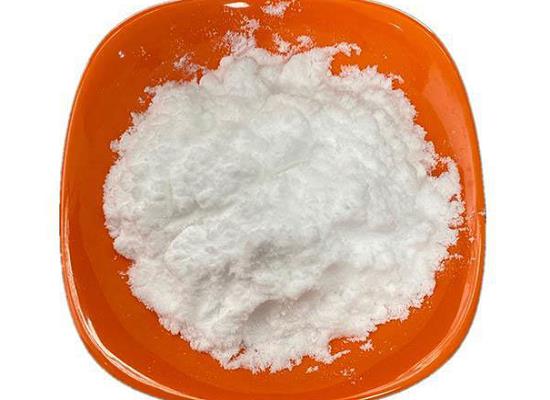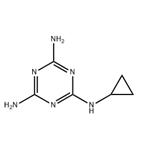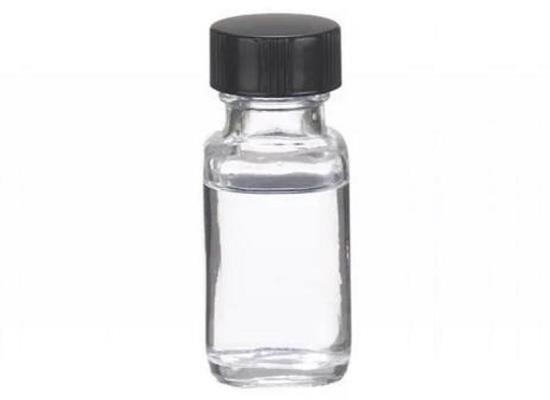Cyromazine: Applications as Insecticides and its Biodegradation
Jun 20,2024
General Description
Cyromazine, an insect growth regulator, targets the ecdysone signaling pathway in insects, disrupting their reproductive capabilities and reducing their populations. This specificity in action makes it a crucial tool in pest control. Additionally, Cyromazine undergoes biodegradation by specific bacterial strains like Arthrobacter sp. and Nocardioides sp., with the potential for environmental remediation. These bacteria efficiently degrade Cyromazine, utilizing it as a nitrogen source and producing less harmful metabolites. This research highlights the dual benefit of Cyromazine in pest management and environmental safety through targeted insect control and microbial degradation processes.

Figure 1. Cyromazine
Applications as Insecticides
Cyromazine, an insect growth regulator, is notably employed in the management of insect pests affecting livestock and households. This chemical acts by interfering with the normal development of insects, making it a pivotal tool in pest control strategies. Its mechanism involves targeting the growth stages of insects, particularly affecting the ovarian germ cells in species like Drosophila, which are often studied as model organisms. Research indicates that Cyromazine functions through the disruption of the ecdysone signaling pathway, a critical pathway in insect development and reproduction. Ecdysone is a steroid hormone that plays a vital role in the molting and metamorphosis of insects. By influencing this pathway, Cyromazine effectively impairs the reproductive capabilities of pests, leading to a reduction in their populations. Studies have demonstrated that when Cyromazine is introduced from the larval to the adult stage of insects, it causes a noticeable decrease in the number of germline stem cells (GSCs) and cystoblasts (CBs) in the adult ovary. Furthermore, it also reduces the number of primordial germ cells (PGCs) in the larval stages. These findings highlight Cyromazine's potent effect on the reproductive structures of insects, thereby reducing their ability to multiply. In an effort to further understand the impact of Cyromazine on insect biology, scientists have employed tissue-specific RNA sequencing to analyze changes at the molecular level. This analysis revealed significant changes in the ecdysone signaling pathway under Cyromazine treatment. Additional experiments involved the silencing of 14 ecdysone signaling responsive genes, which further confirmed Cyromazine's impact on this pathway, as evidenced by a reduction in germ cell numbers. Interestingly, the detrimental effects of Cyromazine on the ecdysone signaling pathway were partially mitigated by supplementing the insect diet with exogenous 20E, a form of ecdysone. This intervention demonstrated that the adverse effects of Cyromazine on germ cells could be reversed, thereby underscoring the specific action of Cyromazine on this hormonal pathway. In conclusion, Cyromazine serves as a critical insect growth regulator by specifically targeting the ecdysone signaling pathway, affecting the reproductive development of pests, which underscores its importance in pest control programs. The specificity of Cyromazine’s mode of action offers an advantage in targeting pests while potentially minimizing broader environmental impacts. 1
Biodegradation
Cyromazine undergoes biodegradation through specific bacterial action, which has significant implications for environmental safety and pollution control. Recent research has illuminated the process by which certain strains of bacteria can break down cyromazine, transforming it into less harmful compounds. This biodegradation was specifically studied using three melamine-degrading bacterial strains: Arthrobacter sp. MCO, Arthrobacter sp. CSP, and Nocardioides sp. ATD6. These bacteria were cultured in liquid media containing mineral nutrients, with glucose as a carbon source and cyromazine serving uniquely as a nitrogen source. This setup underscores the bacteria's capability to utilize cyromazine not just as an incidental substrate but as a primary source of nitrogen, essential for their growth and metabolic functions. Remarkably, Arthrobacter sp. MCO demonstrated a robust degradation capability by completely breaking down a concentration of 23 mg/L of cyromazine within just 7 days. The efficiency of cyromazine degradation by these bacteria indicates a promising avenue for bioremediation strategies where environmental accumulation of cyromazine poses risks to ecosystems and human health. During the degradation process, the bacterial population density notably increased, suggesting that cyromazine degradation supported bacterial growth and activity. This correlation points to the adaptability and potential utility of these bacterial strains in bioremediation applications. Furthermore, the degradation pathway of cyromazine was investigated, revealing the formation of a specific metabolite, N-cyclopropylammeline. This compound was identified using advanced analytical techniques, specifically ultra-performance liquid chromatography-tandem mass spectrometry (UPLC-MS/MS), highlighting the detailed metabolic steps involved in cyromazine breakdown. This study is pioneering as it marks the first reported use of Arthrobacter sp. and Nocardioides sp. in the degradation of cyromycin. The ability of these bacteria to not only degrade cyromazine efficiently but also thrive in environments with cyromazine as the sole nitrogen source offers a dual benefit: reducing cyromazine's environmental impact while promoting bacterial growth. Such discoveries are crucial for developing effective bioremediation technologies aimed at mitigating the environmental presence of synthetic chemicals like cyromazine. 2
Reference
1. Khalid MZ, Sun Z, Zhang J, Zhang S, Zhong G. Cyromazine affects the ovarian germ cells of Drosophila via the ecdysone signaling pathway. Front Physiol. 2022; 13: 992306.
2. Hatakeyama T, Takagi K, Ito K. Biodegradation of cyromazine by melamine-degrading bacteria. J Pestic Sci. 2016; 41(1): 20-24.
- Related articles
- Related Qustion
1,7-Dimethylxanthine is a naturally occurring alkaloid compound that can enhance alertness and reduce drowsiness.....
Feb 27,2025APIThe presence of elevated urinary (R)-(+)-1-Phenylethylamine in paranoid schizophrenics indicates its potential as a biomarker, synthesized by bacterial strains like Enterococcus faecium.....
Jun 20,2024APICyromazine
66215-27-8You may like
- Cyromazine
-

- $0.00 / 1Kg/Bag
- 2025-04-22
- CAS:66215-27-8
- Min. Order: 1KG
- Purity: 98%-102%; USP
- Supply Ability: 1000 KG
- Cyromazine
-

- $1.00 / 1kg
- 2025-04-21
- CAS:66215-27-8
- Min. Order: 1kg
- Purity: 99%
- Supply Ability: 10 mt
- Cyromazine
-

- $0.00 / 25kg
- 2025-04-15
- CAS:66215-27-8
- Min. Order: 25kg
- Purity: ≥98.0%
- Supply Ability: 10tons






